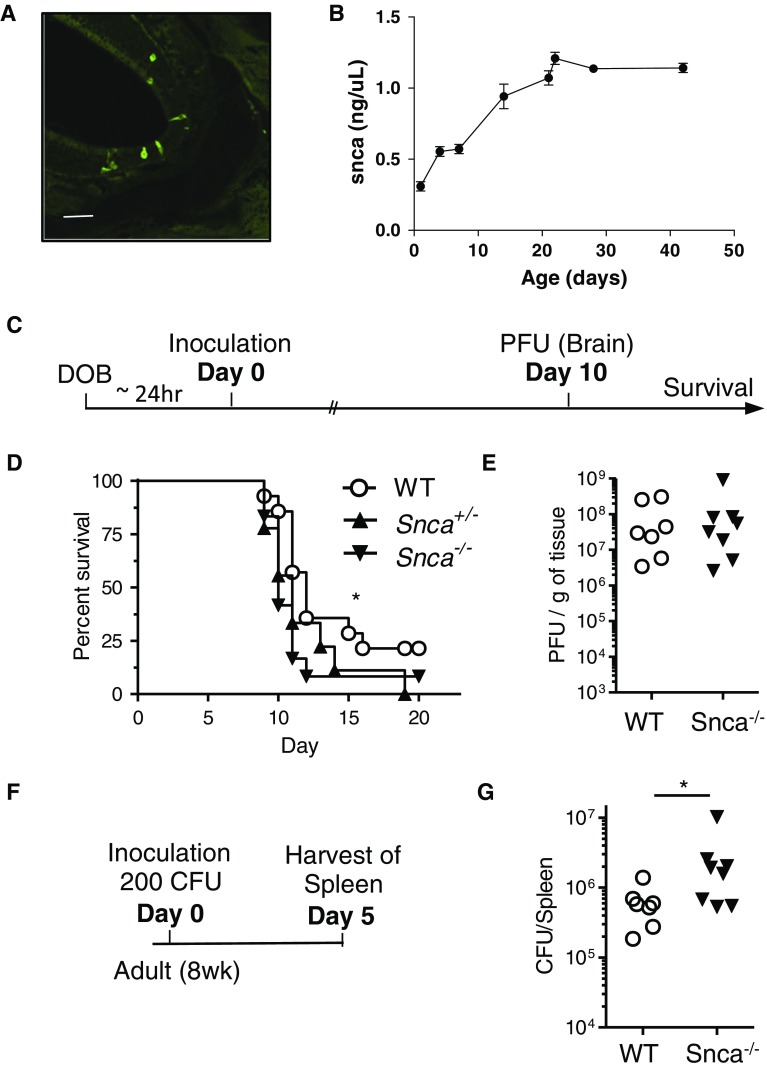Fig. 4.
Endogenous α-Synuclein protects the murine host against microbial infections. a Representative image of indirect, immunofluorescence-based microscopy of reovirus-T3D infected olfactory receptor neurons 3 dpi. Scale bar represents 100 μm. b Quantification of endogenous α-synuclein protein concentration in P1 to P45 wt mice. Each time point represents the average of n ≥ 3 pups ± SEM. c Schema of experimental design to test survival and viral load after reovirus-T3D inoculation. Wild-type (wt) and Snca-null (Snca−/−) littermates were inoculated via the nose pad with a viral dose of 1.7 × 105 plaque-forming units (PFU). d Graph for survival assay. Littermates from heterozygous breeding pairs were used where wt n = 14, Snca +/− n = 9 (heterozygous); Snca −/− n = 12 (male and female). Data were analyzed using the log-rank (Mantel–Cox) test, where p = 0.042 (asterisk) indicates a significant difference in direct comparison of WT with Snca −/− mice. e Quantification of replication competent viral titres (PFU) in the brain at 10 dpi. wt (n = 7) and Snca −/− (n = 8) male and female littermates were used. f Schema of experimental paradigm for bacterial Salmonella typhimurium infection, in which WT (n = 7) and Snca-null (n = 8) 8-week-old males and female littermates were inoculated intravenously with 200 colony-forming units (CFU). g Mice were sacrificed 5 dpi and spleens were harvested to assay the bacterial load in resected organs (CFU). A number of CFU per spleen of individual mice are plotted by genotype; significance was determined between genotypes using a Mann–Whitney test where p = 0.04 (asterisk)

